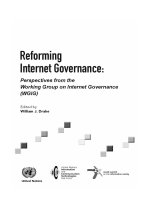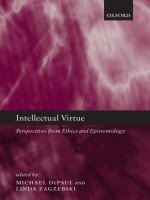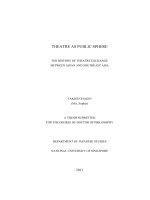The novel as art: Perspectives from Bakhtin and lawrence
Bạn đang xem bản rút gọn của tài liệu. Xem và tải ngay bản đầy đủ của tài liệu tại đây (28.28 KB, 6 trang )
������������������������������������������������������������������������������������������������������������������������������������������������������������������������������������������������������������������������������������������������������������������������������������������������������������������������������������������������������������������������������������������������������������������������������������������������������������������������������������������������������������������������������������������������������������������������������������������������������������������������������������������������������������������������������������������������������������������������������������������������������������������������������������������������������������������������������������������������������������������������������������������������������������������������������������������������������������������������������������������������������������������������������������������������������������������������������������������������������������������������������������������������������������������������������������������������������������������������������������������������������������������������������������������������������������������������������������������������������������������������������������������������������������������������������������������������������������������������������������������������������������������������������������������������������������������������������������������������������������������������������������������������������������������������������������������������������������������������������������������������������������������������������������������������������������������������������������������������������������������������������������������������������������������������������������������������������������������������������������������������������������������������������������������������������������������������������������������������������������������������������������������������������������������������������������������������������������������������������������������������������������������������������������������������������������������������������������������������������������������������������������������������������������������������������������������������������������������������������������������������������������������������������������������������������������������������������������������������������������������������������������������������������������������������������������������������������������������������������������������������������������������������������������������������������������������������������������������������������������������������������������������������������������������������������������������������������������������������������������������������������������������������������������������������������������������������������������������������������������������������������������������������������������������������������������������������������������������������������������������������������������������������������������������������������������������������������������������������������������������������������������������������������������������������������������������������������������������������������������������������������������������������������������������������������������������������������������������������������������������������������������������������������������������������������������������������������������������������������������������������������������������������������������������������������������������������������������������������������������������������������������������������������������������������������������������������������������������������������������������������������������������������������������������������������������������������������������������������������������������������������������������������������������������������������������������������������������������������������������������������������������������������������������������������������������������������������������������������������������������������������������������������������������������������������������������������������������������������������������������������������������������������������������������������������������������������������������������������������������������������������������������������������������������������������������������������������������������������������������������������������������������������������������������������������������������������������������������������������������������������������������������������������������������������������������������������������������������������������������������������������������������������������������������������������������������������������������������������������������������������������������������������������������������������������������������������������������������������������������������������������������������������������������������������������������������������������������������������������������������������������������������������������������������������������������������������������������������������������������������������������������������������������������������������������������������������������������������������������������������������������������������������������������������������������������������������������������������������������������������������������������������������������������������������������������������������������������������������������������������������������������������������������������������������������������������������������������������������������������������������������������������������������������������������������������������������������������������������������������������������������������������������������������������������������������������������������������������������������������������������������������������������������������������������������������������������������������������������������������������������������������������������������������������������������������������������������������������������������������������������������������������������������������������������������������������������������������������������������������������������������������������������������������������������������������������������������������������������������������������������������������������������������������������������������������������������������������������������������������������������������������������������������������������������������������������������������������������������������������������������������������������������������������������������������������������������������������������������������������������������������������������������������������������������������������������������������������������������������������������������������������������������������������������������������������������������������������������������������������������������������������������������������������������������������������������������������������������������������������������������������������������������������������������������������������������������������������������������������������������������������������������������������������������������������������������������������������������������������������������������������������������������������������������������������������������������������������������������������������������������������������������������������������������������������������������������������������������������������������������������������������������������������������������������������������������������������������������������������������������������������������������������������������������������������������������������������������������������������������������������������������������������������������������������������������������������������������������������������������������������������������������������������������������������������������������������������������������������������������������������������������������������������������������������������������������������������������������������������������������������������������������������������������������������������������������������������������������������������������������������������������������������������������������������������������������������������������������������������������������������������������������������������������������������������������������������������������������������������������������������������������������������������������������������������������������������������������������������������������������������������������������������������������������������������������������������������������������������������������������������������������������������������������������������������������������������������������������������������������������������������������������������������������������������������������������������������������������������������������������������������������������������������������������������������������������������������������������������������������������������������������������������������������������������������������������������������������������������������������������������������������������������������������������������������������������������������������������������������������������������������������������������������������������������������������������������������������������������������������������������������������������������������������������������������������������������������������������������������������������������������������������������������������������������������������������������������������������������������������������������������������������������������������������������������������������������������������������������������������������������������������������������������������������������������������������������������������������������������������������������������������������������������������������������������������������������������������������������������������������������������������������������������������������������������������������������������������������������������������������������������������������������������������������������������������������������������������������������������������������������������������������������������������������������������������������������������������������������������������������������������������������������������������������������������������������������������������������������������������������������������������������������������������������������������������������������������������������������������������������������������������������������������������������������������������������������������������������������������������������������������������������������������������������������������������������������������������������������������������������������������������������������������������������������������������������������������������������������������������������������������������������������������������������������������������������������������������������������������������������������������������������������������������������������������������������������������������������������������������������������������������������������������������������������������������������������������������������������������������������������������������������������������������������������������������������������������������������������������������������������������������������������������������������������������������������������������������������������������������������������������������������������������������������������������������������������������������������������������������������������������������������������������������������������������������������������������������������������������������������������������������������������������������������������������������������������������������������������������������������������������������������������������������������������������������������������������������������������������������������������������������������������������������������������VERSITY JOURNAL, VOL. XXVII, NO. 1-2, DEC. 2010
47
The most ancient forms of representing language were organized by laughter—
these were originally nothing more than the ridiculing of another’s language
and another’s direct discourse. Polyglossia and inter-animation of languages
associated with it elevated these forms to a new artistic and ideological level,
which made possible the genre of the novel” (Bakhtin 2005).
LAWRENCE’S DEFENSE
In his well-known essay “Why the Novel Matters,” which was first
published posthumously in 1936 (Enright and Chickera 1989), DH Lawrence
(1885-1930), one of the most celebrated novelists of the twentieth century, argues
that the worth of the novel as a literary genre lies in its quality of representing the
wholeness of life, or life in its totality rather than in fragments. He regards the
novel as the “book of life.” He says, books are not life but only “tremulations on
the either.” “But the novel as a tremulation can make the whole man alive
tremble. Which is more than poetry, philosophy, science, or any other booktremulation can do” (Lawrence 1989).
Lawrence’s concept of life, or the state of being alive, can be compared to
Bakhtin’s concept of active responses or active understanding through the process of
interactive, polyglot dialogism. Only, the former is more concerned with action rather
than language or verbal utterances. Nevertheless, he is fully aware that the language is
the medium to demonstrate the action that is very important in life. And the novel is
just the best medium. To be alive is to live actively, with full sense of existence.
Passivity is just like death, lifeless. He says:
To be alive, to be man alive, to be whole man alive: that is the point. And at its
best, the novel, and the novel supremely, can help you. It can help you not to be
dead man in life. So much of a man walks about dead and a carcass in the street
and house, today: so much of women is merely dead. Like a pianoforte with
half the notes mute” (Lawrence 1989).
The value of heteroglossia is equally recognized by Lawrence. In life,
everything deserves a full play, and according to him, “only in the novel are all
things given full play, or at least, they may be given full play,” with a realization
that “life itself, not inert safety, is the reason for living.” “For out of the full play
of all things emerges the only thing that is anything, the wholeness of a man, the
wholeness of a woman, man alive and live woman” (Lawrence 1989).
CONCLUSION
Thus, traditional stylistics and contemporary literary scholarship does
not recognize novel as artistic genre, Bakhtin and Lawrence have testified that
novelistic discourse has also its own artistic quality, with scope to deal with social
reality better and in a much wider way. While Bakhtin sees in the language of the
novel (and other prose arts) an “ideologically saturated system of interaction,”
capable of forming a “worldview ensuring maximum mutual understanding in all
spheres of ideological life,” Lawrence argues that the worth of the novel as a
literary genre lies in its quality of representing the wholeness of life, or life in its
totality rather than in fragments. Bakhtin's appreciation of novelistic discourse as
something that enabled the "representation of heteroglossia with all its social and
48
THE NOVEL AS ART: PERSPECTIVES FROM …
historical voices…," and Lawrence's description of the novel as the “book of life”
are both equally potent scholarly defenses establishing the novel as a form of art.
WORKS CITED
Bakhtin, Mikhail. 2005. Discourse in the Novel. Pages 393-420 in B. Pandey
(editor). Intellectual History Reader a Critical Introduction.
----------. 2005. From the Prehistory of Novelistic Discourse. Pages 123-154 in
Lodge (editor). Modern Criticism and Theory.
Enright, D. J. and De Chikera. (editors). 1989. English Critical Texts. Oxford
University Press, New Delhi.
Lawrence, D.H. 1989. Why the Novel Matters. Pages 286-292 in Enright and
Chikera (editors), English Critical Texts.
Lodge, David and Nigel Wood. 2005. Modern Criticism and Theory. (2nd ed.),
Pearson Education, Delhi.
Pandey, Beerendra (editor) .2005. Intellectual History Reader a Critical
Introduction. MK Publishers, Kathmandu.









